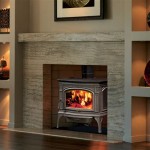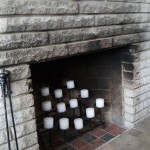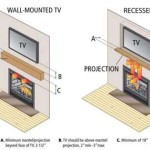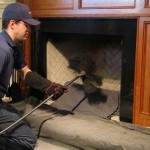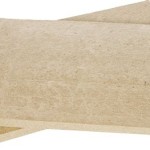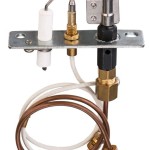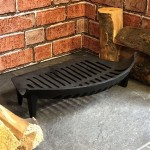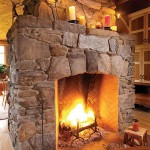Enhancing Ambience: Fireplace Installation on Flat Walls
The integration of a fireplace into a living space is a design decision that can significantly enhance its aesthetic appeal and perceived comfort. While traditional fireplaces often involve complex construction and dedicated chimney systems, the advancement of fireplace technology has introduced increasingly versatile options, notably fireplaces designed for installation directly onto flat walls. This flexibility allows homeowners and designers to incorporate the warmth and visual appeal of a fireplace without extensive structural modifications.
The installation of a fireplace on a flat wall presents a range of benefits, including space savings, aesthetic versatility, and simplified installation processes compared to traditional built-in fireplaces. These factors have contributed to the growing popularity of flat-wall fireplaces in modern residential and commercial environments. Understanding the various types of flat-wall fireplaces, the installation considerations, and the aesthetic possibilities are crucial for a successful integration.
This article explores the nuances of fireplace installation on flat walls, examining different types of fireplaces suitable for this application, the key considerations during the planning and installation phases, and the aesthetic and functional advantages they offer.
Types of Fireplaces Suitable for Flat Wall Installation
Several types of fireplaces are well-suited for installation on flat walls, each offering distinct advantages in terms of fuel source, aesthetic design, and installation requirements. These options include electric fireplaces, gas fireplaces (ventless or direct vent), and ethanol fireplaces.
Electric Fireplaces: Electric fireplaces are perhaps the most straightforward option for flat wall installation. They require only a standard electrical outlet and do not produce any emissions or require venting. Electric fireplaces utilize simulated flames, often created with LED technology, to mimic the look of a real fire. They typically incorporate a heating element that can warm a room, offering both visual appeal and functional heating. Electric fireplaces come in various styles, from traditional mantel designs to sleek, modern wall-mounted units. Their ease of installation and operation makes them a popular choice for homeowners seeking a convenient and aesthetically pleasing fireplace solution.
Gas Fireplaces (Ventless and Direct Vent): Gas fireplaces offer a more realistic flame experience compared to electric models. However, they require a gas line connection for fuel supply. Two primary types of gas fireplaces are suitable for flat wall installation: ventless and direct vent. Ventless gas fireplaces, also known as vent-free fireplaces, do not require a chimney or vent. They burn propane or natural gas and release the combustion byproducts directly into the room. While convenient in terms of installation, ventless gas fireplaces have limitations relating to room size, ventilation requirements, and potential concerns about indoor air quality. Code restrictions and homeowner preferences often influence the suitability of ventless options.
Direct vent gas fireplaces, on the other hand, offer a safer and more efficient solution. They exhaust combustion byproducts directly outside through a sealed venting system. This system typically involves two pipes: one for intake of fresh air for combustion and the other for exhaust. Direct vent fireplaces can be vented horizontally through an exterior wall, making them ideal for flat wall installations. Direct vent models provide a realistic flame, efficient heating, and improved indoor air quality compared to ventless options, but they typically require more complex installation work.
Ethanol Fireplaces: Ethanol fireplaces utilize liquid ethanol fuel, a renewable resource, to produce a real flame. They do not require venting or gas lines, making them a flexible option for flat wall installations. Ethanol fireplaces are relatively easy to install and operate, and they offer a clean-burning flame with minimal odor or smoke. However, they produce less heat than gas or electric fireplaces, and the cost of ethanol fuel can be a factor to consider. Ethanol fireplaces are often chosen for their aesthetic appeal and environmental friendliness.
When selecting a fireplace type for flat wall installation, it is crucial to consider factors such as budget, aesthetic preferences, heating requirements, installation complexity, and local building codes. Understanding the nuances of each option will ensure a successful and satisfying fireplace experience.
Key Considerations for Planning and Installation
Prior to installing a fireplace on a flat wall, careful planning and consideration of several key factors are essential. These include structural integrity, safety regulations, venting requirements (if applicable), electrical or gas line connections, and aesthetic integration with the existing décor.
Structural Integrity: The wall's structural integrity is paramount in ensuring the safe and secure installation of the fireplace. The wall must be capable of supporting the weight of the fireplace unit, including any decorative elements such as mantels or surrounds. For heavier units, it may be necessary to reinforce the wall with additional framing or supports. Consulting with a structural engineer or qualified contractor is advisable, especially for older homes or walls with unknown construction.
Safety Regulations and Building Codes: Adherence to local building codes and safety regulations is non-negotiable. These codes govern aspects such as clearances to combustible materials, venting requirements, electrical connections, gas line installations, and fire safety measures. Obtaining the necessary permits and inspections is crucial to ensure compliance and avoid potential hazards or legal issues. Failure to comply with building codes can result in fines, mandatory modifications, or even the removal of the fireplace.
Venting Requirements (Gas Fireplaces): For gas fireplaces, proper venting is essential for safe and efficient operation. Direct vent fireplaces require a sealed venting system that exhausts combustion byproducts to the outside. The venting system must be installed according to the manufacturer's specifications and local building codes. Ventless gas fireplaces, while not requiring venting, have restrictions on room size and ventilation to ensure adequate air quality. Proper ventilation is crucial to prevent the build-up of carbon monoxide and other harmful gases.
Electrical or Gas Line Connection: Electric fireplaces require a dedicated electrical circuit with sufficient amperage to handle the fireplace's power consumption. Gas fireplaces require a gas line connection installed by a licensed gas fitter. The gas line must be properly sized and connected to ensure a safe and reliable gas supply. It is crucial to hire qualified professionals for electrical and gas line connections to mitigate the risk of electrical shock, gas leaks, or fires.
Aesthetic Integration: The fireplace should seamlessly integrate with the existing décor and architectural style of the room. Consider the size, style, and finish of the fireplace unit to ensure it complements the surrounding space. Options include traditional mantel designs, modern wall-mounted units, and customizable surrounds. Attention to detail, such as the choice of materials, colors, and lighting, can enhance the overall aesthetic appeal of the fireplace.
Thorough planning and careful attention to these key considerations are critical for a safe, compliant, and aesthetically pleasing fireplace installation on a flat wall. Engaging qualified professionals, such as contractors, electricians, and gas fitters, is highly recommended to ensure a successful outcome.
Aesthetic and Functional Advantages
Installing a fireplace on a flat wall offers several aesthetic and functional advantages, contributing to an enhanced living environment. These benefits include space savings, design flexibility, increased home value, and improved comfort and ambience.
Space Savings: Traditional fireplaces often require a substantial footprint, including a large hearth and chimney. Flat wall fireplaces, particularly electric and ethanol models, offer a space-saving alternative. They can be mounted directly onto a wall, eliminating the need for a dedicated hearth or extensive structural modifications. This makes them ideal for smaller homes, apartments, or rooms where space is limited.
Design Flexibility: Flat wall fireplaces offer unparalleled design flexibility. They come in a wide range of styles, sizes, and finishes, allowing homeowners to customize the look to suit their specific tastes and décor. Options include traditional mantels, modern wall-mounted units, and minimalist designs. The ability to choose from various flame effects, colors, and surround materials provides endless possibilities for creating a unique and personalized fireplace design.
Increased Home Value: A well-designed and properly installed fireplace can significantly increase a home's value. A fireplace is often perceived as a desirable feature that enhances the overall appeal and marketability of a property. A flat wall fireplace, with its modern aesthetic and space-saving design, can be a particularly attractive selling point for potential buyers.
Improved Comfort and Ambiance: Fireplaces, regardless of type, contribute to a more comfortable and inviting living environment. The warmth and visual appeal of a flickering flame can create a cozy and relaxing atmosphere, perfect for socializing, reading, or simply unwinding after a long day. Electric and gas fireplaces also provide functional heating, supplementing the existing heating system and reducing energy costs.
In summary, the installation of a fireplace on a flat wall offers a multitude of aesthetic and functional advantages. From space savings and design flexibility to increased home value and improved comfort, a flat wall fireplace can transform a living space into a more appealing and enjoyable environment.

Flat Wall Fireplaces Are Us

Nice Fireplace Design Free Standing Electric Corner

Be Modern Ravensdale Electric Fireplace Suite Flat Wall Fireplaces Packages Suites Living Room With

Flare Collection British Designed Fires Fireplaces Stoves

One Room Challenge Spring 2024 Week 4 All About The Fireplace Deeply Southern Home Electric Living Design

Fireplace Design Ideas Flat Wall Genstone
Cast Tec Flat Victorian Limestone Fireplace Hot Co

Modern Flames Landscape Pro 58 Electric Fireplace Wall Mounted Suite Very Good

Recessed Or Wall Mount Electric Fireplace Installations Explained Touchstone Home S Inc

Provident Flatwall Electric Cast Iron Arch Capital Fireplaces

